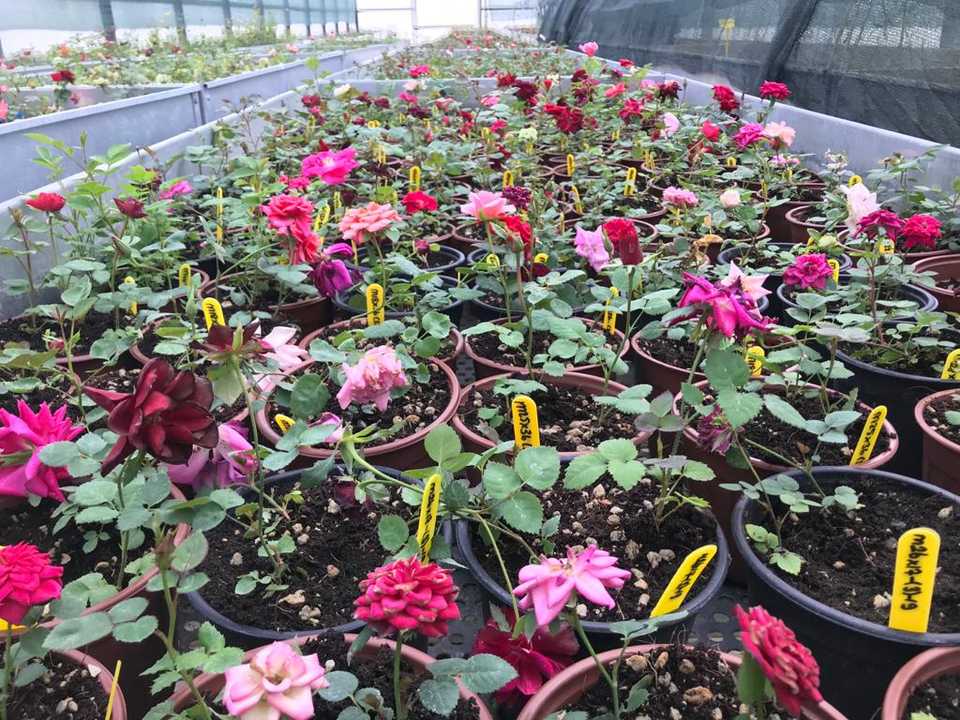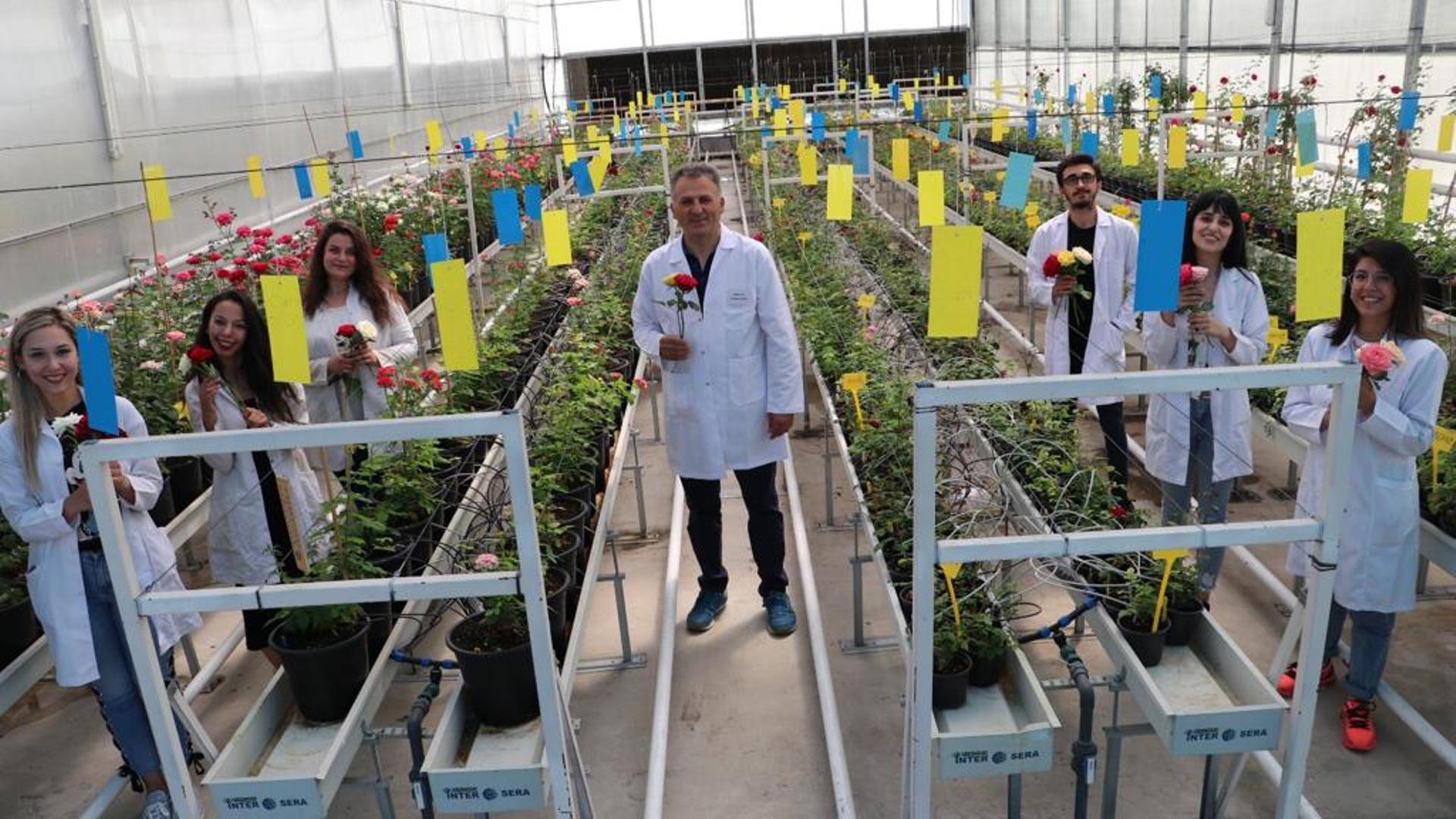Soner Kazaz, soon to be 47, says that when he first started at Erzurum’s Atatürk University in 1990, there was no provision for him to study and learn about ornamental plants at the Department of Horticulture.
“In the departments of horticulture in Turkey,” he tells TRT World, “there were no professors or research divisions for ornamental plants – maybe three or four people tops.”
Kazaz says it was when he travelled outside of Turkey he realised that ornamental plants were big business, and decided to focus on them.
Thirty years later, with a MSc and a PhD under his belt, Kazaz is a professor and he specialises in ornamental plant production and breeding at Ankara University’s Faculty of Agriculture. His focus is on cut flowers, such as the rose, carnation and gerbera.

He and his team have created twenty new types of rose after six years of applying painstaking attention to detail. They have hybridised 7,000 roses and also sowed 30,000 seeds every year.
He says the seeds they sowed in the Ankara University Faculty of Agriculture’s Horticulture Division Research & Development greenhouses, would bear fruit in November-December. They then collected seeds.
After drying them over a week, storing them between 2 to 4 degrees Celsius for a hundred days, they proceeded to sowing them. They observed and measured the hybrid plants against various criteria such as colour and size, and discarded the ones that did not make the grade.
“In Turkey,” Kazaz says, “people have a preference for big head buds – over six centimetres, as opposed to intermediate heads, which are 3-6 centimetres, or sweet heads, which are 3 centimetres and below. So that’s what we focused on.”
The economy of flowers
According to Kazaz, Turkey exports $80.4 million worth of ornamental plants. Turkey’s cut flower exports stand at $36 million dollars. The country, however, imports $2.6 million dollars worth of cut flowers (18.5 million stems) and he points out that this means “every 1 in 4.4 persons consumes imported roses.”
Kazaz says there are two hundred varieties in the world, forty five of which are grown in Turkey: “22.5% of rose varieties in the world are present in Turkey”.
“That said,” he tells TRT World, “there are no commercially traded roses developed in Turkey.”
“We have developed twenty roses in our greenhouse,” Kazaz says. “Thanks to the support of the rectorship, we sent three of them to begin with to the Ministry of Agriculture and Forestry to be registered.”
“There is a cost of 7,160 TL ($1044.80) per application, and we are planning to apply to register all 20 varieties when we have additional funding,” Kazaz adds.
A major Dutch company showed interest, and came to the university to see the flowers before the pandemic began to take hold. They followed up with an offer, and Kazaz says the university is carefully going over it.
While they will not hand over all twenty varieties to overseas companies, he says they will allow the sale of several they have bred in order to open up to global markets.
“What is really important to us, of course, is to provide local rose producers with a lower-cost alternative to imported saplings that are priced at 2.33 euros ($2.72) each, 1.05 euros ($1.22) of which is royalty fees.”
“The lower cost roses we have created will mean a higher profit margin to the producers, and higher exportability as well.”
Kazaz says Turkish rose producers, in order to avoid the high cost of foreign species, sometimes propagate them themselves. However, because these roses have no certificates, they cannot be sold to overseas customers.
“With our roses,” he theorises, “local producers won’t have to resort to such means and can sell their flowers overseas easily.”
A matter of chance, and a lot of expertise
“If you want to develop a new breed of rose,” Kazaz says, “you have one in a thousand chance.”
“Of course, the more experience you have,” he muses, “the better your chances are.”
Named after the family
The three species that were sent to the ministry to be registered are called Kazaz, which is Soner’s family name. This has been allocated to the bright red rose.
There is also the pale pink beauty that is Gulberk, a combination of Soner Kazaz’s wife Gul (her name means “rose” in Turkish) and their son Berke. “I couldn’t name a rose ‘Rose’, after all,” Kazaz laughs, so I called it a combination of the two. It turns out it means ‘Rose petals.’”
Finally, there is Berke, a deep pink rose named after Soner Kazaz’s 17 year old son.










Discussion about this post